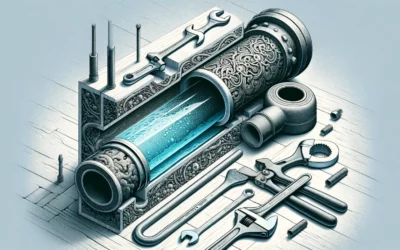Welcome to our comprehensive guide on “Navigating Insurance Claims for Water Leaks”. Water damage can have a significantly adverse effect on your property, and dealing with insurance claims may sometimes seem like a complex process. This post is designed to provide you a clear path forward, equipping you with essential knowledge and tips to deal with your insurance company confidently. It will guide you through the journey of understanding coverage parameters, preparing claims, and maximizing your reimbursement potential. By relying on expert opinions and factual information, we aim to make your experience less stressful and more productive. This pragmatic, informative guide will surely be a useful tool at your disposal in decoding the intricacies of water damage insurance claims. Let’s dive in!
Understanding the Basics of Water Leak Insurance Coverage
Insurance Coverage Basics
An important part in owning a property is understanding how to tackle any potential disasters such as water leaks. Ignorance can lead to significant financial losses, hence it’s crucial to comprehend the details of your insurance policy, which includes understanding basic water leak coverage. Generally, most homeowners’ insurance policies cover sudden and accidental damage caused by a water leak. This means if your dishwasher unexpectedly breaks and results in a leak, your insurance may cover the damages. However, repercussions of prevalent water leaks usually are not part of the package, as insurers expect homeowners to maintain their property regularly.
| Coverage type | Explanation |
|---|---|
| Sudden and Accidental Damage | This pertains to unforeseen water damage like a burst pipe. |
| Prevalent Leak Damage | Damage from leaks that have been present for a while, typical homeowners’ insurance doesn’t cover this. |
| Flood Damage | Damage from floods is usually not covered by a standard home insurance policy. |
Despite the basic coverage, remember that each policy has its limitations. Insurance coverage on water damage can have certain exceptions such as ‘gradual damage’. This refers to damage that occurs over time due to a slowly leaking pipe or cracks in the foundation. But don’t worry, there are specific coverages such as flood insurance or sewer backup coverage that you can purchase separately.
- Flood insurance: This coverage is typically sold separately and covers property damage caused by floods.
- Sewer backup coverage: This can be added to your homeowners insurance policy and can help cover the costs of repairs from water backup damages.
It is important to review your policy and talk to your insurance agent to clarify what your policy covers and what it doesn’t. Always remember to take preventive steps to avoid water leaks and damage, as being proactive can save you from future hassles and financial hardship.

Knowing Your Rights and Responsibilities in Filing a Claim
Understanding your rights and responsibilities when filing a claim for a water leak can play a pivotal role in ensuring that you get the maximum possible benefit out of your insurance policy. It is crucial to be well-informed and proactive while navigating this process. Key information can significantly affect the outcome of your claim, and it’s essential to be clear about what your policy covers. Besides the basics of your policy, make sure you’re familiar with the deductibles, coverage limits, and any exclusions that may apply. Many people find themselves surprised by the fine print in their policies when it’s too late to change anything.
Furthermore, it’s part of your responsibilities to promptly report any water leaks or damage. A delay in reporting might result in your claim being denied. It’s also essential that you prevent further damage after identifying a leak. Below is an explicative table that breaks down a few general responsibilities that you hold as a policyholder:
| Responsibility | Brief Description |
|---|---|
| Report the water leak immediately | Any delay might result in your claim being denied. It’s essential to report the leak as soon as possible. |
| Prevent further damage | Once the leak has been identified, you should take responsible steps to prevent it from causing more damage. |
| Document the damage | Take time-stamped photos of the damage and maintain a record of any related receipts and expenditures. These will be required when filing the claim. |
Decoding the Jargon in Your Homeowner’s Insurance Policy
As homeowners, you’ve probably come across terms like Deductible, Actual Cash Value (ACV), and Replacement Cost Value (RCV) when dealing with your insurance policy. Understanding these terms is crucial when filing a claim, particularly for water leaks. The Deductible is what you’re expected to pay out of pocket before your insurance coverage kicks in. For instance, if your deductible is $1,000 and the damage is worth $5,000, your insurance company will pay $4,000. In terms of reimbursement, insurers use either ACV or RCV. ACV considers the depreciation of your property – the value of your property minus its wear and tear. RCV, on the other hand, refers to the cost of replacing the damaged property with a brand new one of similar quality and kind, without considering depreciation. For example, if a five-year-old washing machine leaks and damages your floor, an ACV policy would reimburse you for the actual value of the five-year-old washing machine, while RCV policy would cover the cost of a brand new washing machine.
| Term | Description |
|---|---|
| Deductible | The amount you’ll have to pay out of pocket before your insurance coverage begins. |
| Actual Cash Value (ACV) | The value of your property, considering its depreciation. |
| Replacement Cost Value (RCV) | The cost of replacing your property with a new one of similar kind and quality. |
Mastering these terms will ease your navigation through the insurance claim process and ensure you get the highest possible compensation. Be sure always to clarify any confusion with your insurance provider; remember, knowledge is your best defense when filing a claim.
Practical Tips for Providing Sufficient Evidence of Damage
The first vital step in substantiating your water leak insurance claim involves meticulously documenting all forms of damage. Start by taking clear high-resolution photographs from different angles capturing the entire area along with the focus on the specific damaged sections. Then, create a thoroughly detailed written account of the damage. This documentation should cover factors such as the date and time you first noticed the leak, any actions you took to mitigate the damage, and the effects of the water leak – be it property damage, mould development, or structural issues.
It can be extremely beneficial to collect multiple forms of evidence, including professional assessments. Engage a professional appraiser or an independent contractor to provide a well-documented estimate of the repairs needed. This would include a structured breakdown of costs including labour, raw materials, and any additional services.
Creating an HTML table to pair with your evidence will further strengthen your claim. Here is an example of how you can use this strategy:
| Type of Evidence | Description |
|---|---|
| Photographic Evidence | High-resolution photographs taken from multiple angles showing the entire area and specific sections of damage. |
| Detailed Written Account | Written documentation of when and how the leak was discovered, the steps taken to mitigate damage, and the overall impact of the incident. |
| Professional Assessments | Estimates from a professional appraiser or contractor, providing a detailed cost breakdown for required repairs. |
This comprehensive, multi-angled approach not only serves to paint a vivid picture of the incident to the insurer but also backs up the claim with concrete factual elements that can be independently assessed and verified.
Expert Strategies to Maximize Your Insurance Payout
Understanding your homeowners’ insurance policy can be a tricky task. However, with expert strategies, you can ensure you maximize your insurance payout for water leak damages. Firstly, it’s incredibly important to read and understand your policy. Understanding the coverage and limitations of your insurance policy is the first step to making a successful claim. Secondly, immediate mitigation of damages is key. The faster you act to minimize the damages, the better chances you have at a higher payout rate.
Creating a detailed inventory of all damaged property is another strategy that can amplify your payout. Documenting every aspect of the damage with photographs and a corresponding spreadsheet can help prove the extent of losses you incurred. If you decide to undertake repairs yourself, keep track of every expense; from equipment rental to your own labor costs. There’s also value in hiring a professional. An experienced contractor can help gauge the repair costs accurately which adds credibility to your claim.
| Strategy | Benefit |
|---|---|
| Reading and Understanding Your Policy | Ensure you’re familiar with what your policy covers and its limits. |
| Immediate Damage Mitigation | The faster you act, the less damage you’ll incur, thus potentially increasing your payout. |
| Detailed Inventory | Proof of damage can help gauge the accurate amount of losses incurred. |
| Track Expenses | Every expense recorded can be included in the claim. |
| Hiring a Professional | A professional opinion can provide credibility to your claim. |
Armed with these expert strategies, remember that every claim is unique. Please consult professional advice before making any decisions. Keep a calm and composed attitude throughout the claim process for the best chances of a larger insurance payout.

The Process of Appealing Denied Claims: What You Need to Know
The first step in the process is that you must file a formal appeal with your insurance company providing specific details for denial reconsideration. Highlight why you believe the claim judgment was flawed. This could be due to an erroneous interpretation of the damage by the insurance inspector, overlooked aspects in your policy, etc. Make sure you provide supporting documents such as photos, receipts, and professional opinions. Do remember to send everything through certified mail and keep copies for yourself.
The next step is legal action, which should be considered if the insurance company is firm on its denial after your appeal. Legal procedures can be time consuming and costly, and so it’s important to seek the advice of a lawyer specialized in property claims. They will examine your case, evaluate the ethicality of your insurer’s actions, and guide you on whether proceeding to court would serve your best interest. It’s crucial to understand each state has different laws around property claims:
| State | Legal time frame to file a suit | Notes |
|---|---|---|
| California | 2 Years | From the date of loss |
| Florida | 5 Years | From the date of loss |
| New York | 3 Years | From the date when denial was received |
In combination with professional advice, a detailed understanding of your rights and responsibilities as a policyholder ensures your odds of turning the denial around are increased. It’s wise to read through your insurance contract thoroughly, consult your state’s insurance regulator, or get in touch with nonprofit organizations that specialize in insurance education. Remember, the insurer intends to minimize their payouts, while your goal is to secure the maximum, possible legitimate claim. Thus, this procedure is indeed a negotiation process and it pays to play smart.
Key Takeaways
In conclusion, maneuvering your way through insurance claims for water leaks doesn’t have to be overwhelmingly challenging. It’s about having factual knowledge, understanding the process, and maintaining a diligent record of the damage. The onus is on you to protect your property, promptly report leaks, and cooperate fully with the insurer’s investigation. If you do everything as recommended in this comprehensive guide, your chances of a successful claim will substantially increase. Remember, insurance is there to safeguard you and your property - so don’t hesitate in asking clarifying questions or seeking professional help if you need further guidance. Dealing with water leaks might be inconvenient, but it’s less so when you know your water leak is covered by insurance. Here’s to making the journey a smoother ride for you! Stay informed and stay protected.









